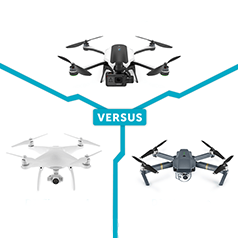
Products
DJI Mavic Pro vs Phantom 4 vs GoPro Karma
The Mavic Pro has been released in direct competition to GoPro's Karma. Find out how the two compare and whether DJI's new quad improves on the Phantom 4. ... Read More
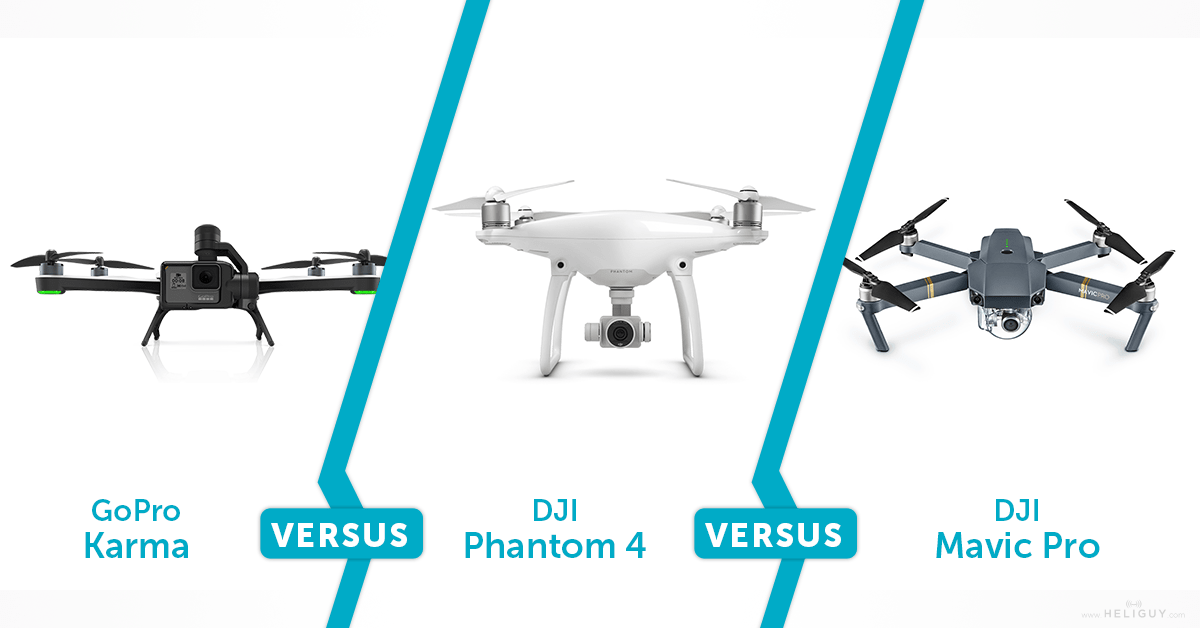
Navigation
1. What's Included? 2. Appearance 3. Performance 4. Battery Life 5. Camera Specs
As with our previous VERSUS articles, we will be comparing the following criteria: What’s Included, Camera Specs, Appearance, Performance and Battery Life. This should provide a solid overview of each model and their respective strengths as well as highlighting potential flaws. First things first, let’s check out their specifications in our comparison chart:
1476271886GoPro_Karma-small.png GoPro Karma | 1476273055Phantom_4_v2-small.png DJI Phantom 4 | 1476272928Mavic_Pro-small.png DJI Mavic Pro |
#### Maximum Speed | 15 m/s | 20 m/s (Sport mode) | 17.88 m/s (40 mph) in Sport mode without wind |
#### Weight | 1006 g | 1380 g | 743 g (incl. gimbal cover, battery and propellers) |
#### Flight Time | Up to 20 minutes | Approx. 28 minutes | Max. 27 minutes |
#### Maximum Distance | 1000 m | FCC Compliant: 5 km CE Compliant: 3.5 km (Unobstructed, free of interference ) | 8 mi (13 km, 0 wind) |
#### Maximum Flight Altitude | 4500 m | 6000 m | 5000 m |
REMOTE CONTROLLER
#### Operating Frequency | 2.4 GHz | 2.4 GHz to 2.483 GHz | 2.4 GHz to 2.483 GHz |
Battery
#### Weight | 545 g | 462 g | 240 g |
#### Capacity | 5100 mAh | 5350 mAh | 3830 mAh |
#### Voltage | 14.8 V | 15.2 V | 11.4 V |
#### Energy | 75.4 Wh | 81.3 Wh | 43.6 Wh |
#### Charger Voltage | 16.8 V | 17.4 V | 13.05 V |
Camera
#### Camera Type | HERO5 Black HERO5 Session HERO4 Black/Silver | Still Photography: 12.4 MP JPEG, DNG (RAW) Video Recording: UHD: 4096x2160 (4K) 24 / 25p 3840x2160 (4K) 24 / 25 / 30p 2704x1520 (2.7K) 24 / 25 / 30p FHD: 1920x1080 24 / 25 / 30 / 48 / 50 / 60 / 120p HD: 1280x720 24 / 25 / 30 / 48 / 50 / 60p | Still Photography: 12.35 MP JPEG, DNG Video Recording: C4K: 4096x2160 24p 4K: 3840x2160 24 / 25 / 30p 2.7K: 2704x1520 24 / 25 / 30p FHD: 1920x1080 24 / 25 / 30 / 48 / 50 / 60 / 96p HD: 1280x720 24 / 25 / 30 / 48 / 50 / 60 / 120p |
APP
#### Mobile App | GoPro Passenger | DJI GO | DJI GO |
#### Device Compatibility | iOS 9 and later Android 5.0 and later | iOS 8.0 or later Android 4.1.2 or later | iOS 8.0 or later Android 4.1.2 or later |
Mavic Pro v Phantom 4 v GoPro Karma: Key Features
When you're looking to invest in a quadcopter, the three names that will be filling your shopping feeds right now will be the DJI Mavic Pro, Phantom 4 and GoPro's Karma. Heliguy has put together a guide allowing you to see their key features side by side which will allow you to make an informed decision. Without further ado, let's see which of these drones comes out on top.
1. WHAT’S INCLUDED?
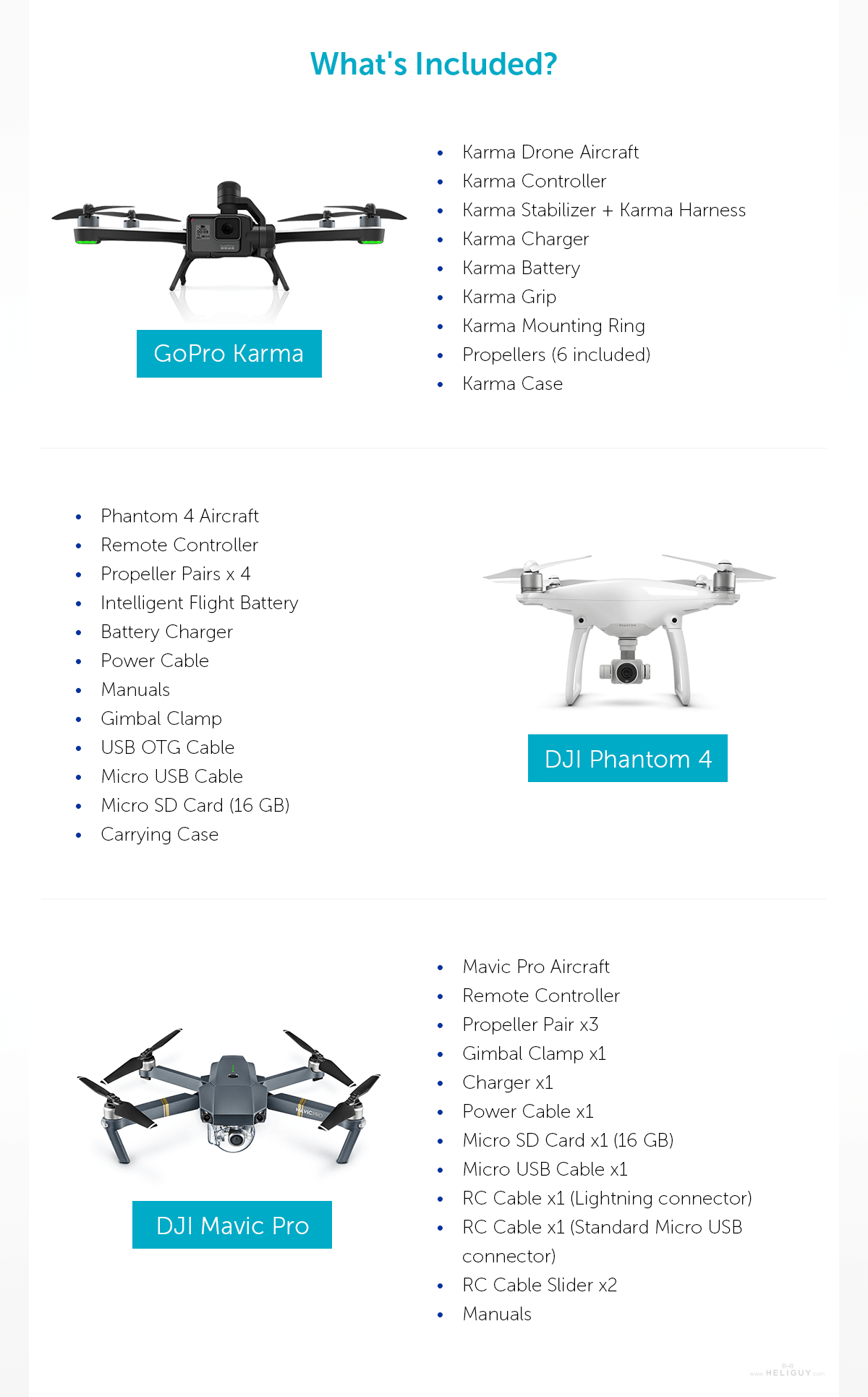
2. APPEARANCE
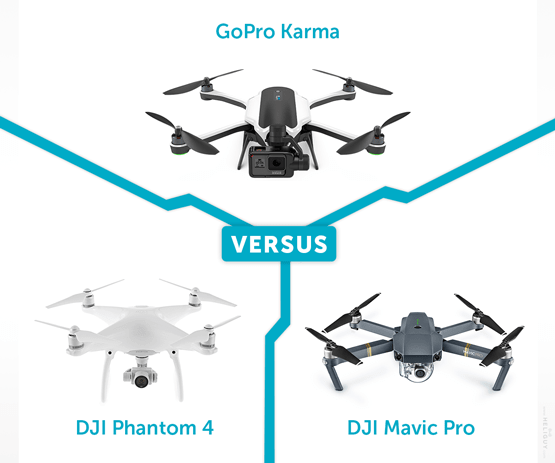
3. PERFORMANCE
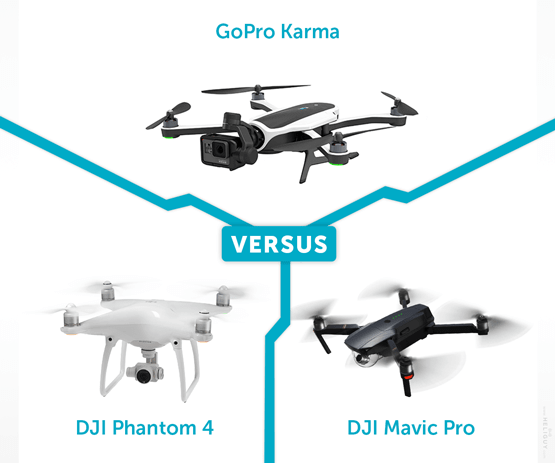
4. BATTERY LIFE
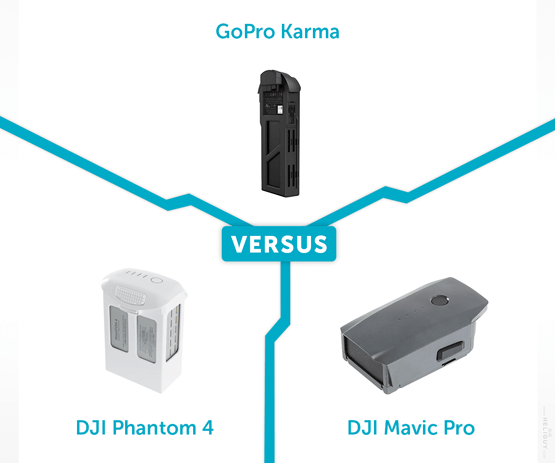
5. CAMERA SPECS
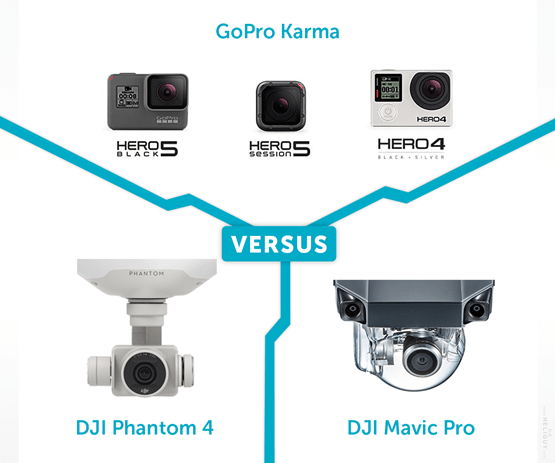
Further Reading
For more information about the Karma launch read our blog HERE
To look at our launch day coverage of the Mavic Pro click HERE
If you're looking for an in-depth look at the Phantom 4 you can find our entire guide here: PART 1, PART 2, PART 3, PART 4, PART 5
...
Keep checking back to Heliguy's Insider blog for insights into new products and, of course, the latest news from the drone industry.
